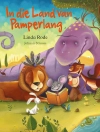Roses plead to go out to dance; an old oak tree offers advice; paintings of gods and goddesses come alive. In
What Flowers Say, renowned writer George Sand dares children to fantasize, to believe in an alternate world. This magical collection, originally penned for her grandchildren, calls into question what is real, a life lesson from someone who refused to accept the gender roles available to women in the nineteenth century. Sand shares her love and immense knowledge of science and mythology, engages issues of class and character, and captures the wonder and determination of a curious child, offering all of us a true sense of infinite possibilities—well beyond the world we live in.
Table des matières
To the Reader (from the translator, about George Sand)
What Flowers Say
The Bug-Eyed Fairy
The Talking Oak
The Caste of Pictures
A propos de l’auteur
Amantine Lucile Aurore Dupin (1804-1876), later Baroness Dudevant wrote highly-acclaimed novels and memoirs under the pseudonym
George Sand. Her best known works include
Indiana,
Léila, and
Story of My Life. The film
Impromptu(1991) with Judy Davis is based on her life. She had two children, Solange and Maurice, and four grandchildren, for whom she wrote
What Flowers Say and Other Stories.
Molly Crabapple is an artist and writer living in New York. Her work engages subculture, politics, and rebellion. Crabapple’s 2013 solo exhibition,
Shell Game, a series of large-scale paintings about the revolutions of 2011, led to her being called “Occupy’s greatest artist” by
Rolling Stone, and “an emblem of the way that art could break out of the gilded gallery” by
The New Republic. Crabapple is a columnist for VICE, and has written for
The New York Times,
The Paris Review, CNN,
The Guardian,
The Daily Beast,
Jacobin, and
Der Spiegel. She is the author of an illustrated memoir,
Drawing Blood (Harper Collins 2015).












